We grew celeriac for the first time this winter, inspired by a celeriac soup we tasted a couple years ago. It grows like celery but the part you eat is underground, rather than the stalks above. Don’t get me wrong, the whole plant is edible, but celeriac was bred for the root, so that’s our focus today.
Celeriac is ready to harvest around the same time as celery. The identifying factor is when the shoulders of the root are visible above ground, and the diameter is between 3-4″. This will take several months. We plant it here (Los Angeles’s mild winter climate) in fall for an early spring harvest. Then the fun begins.
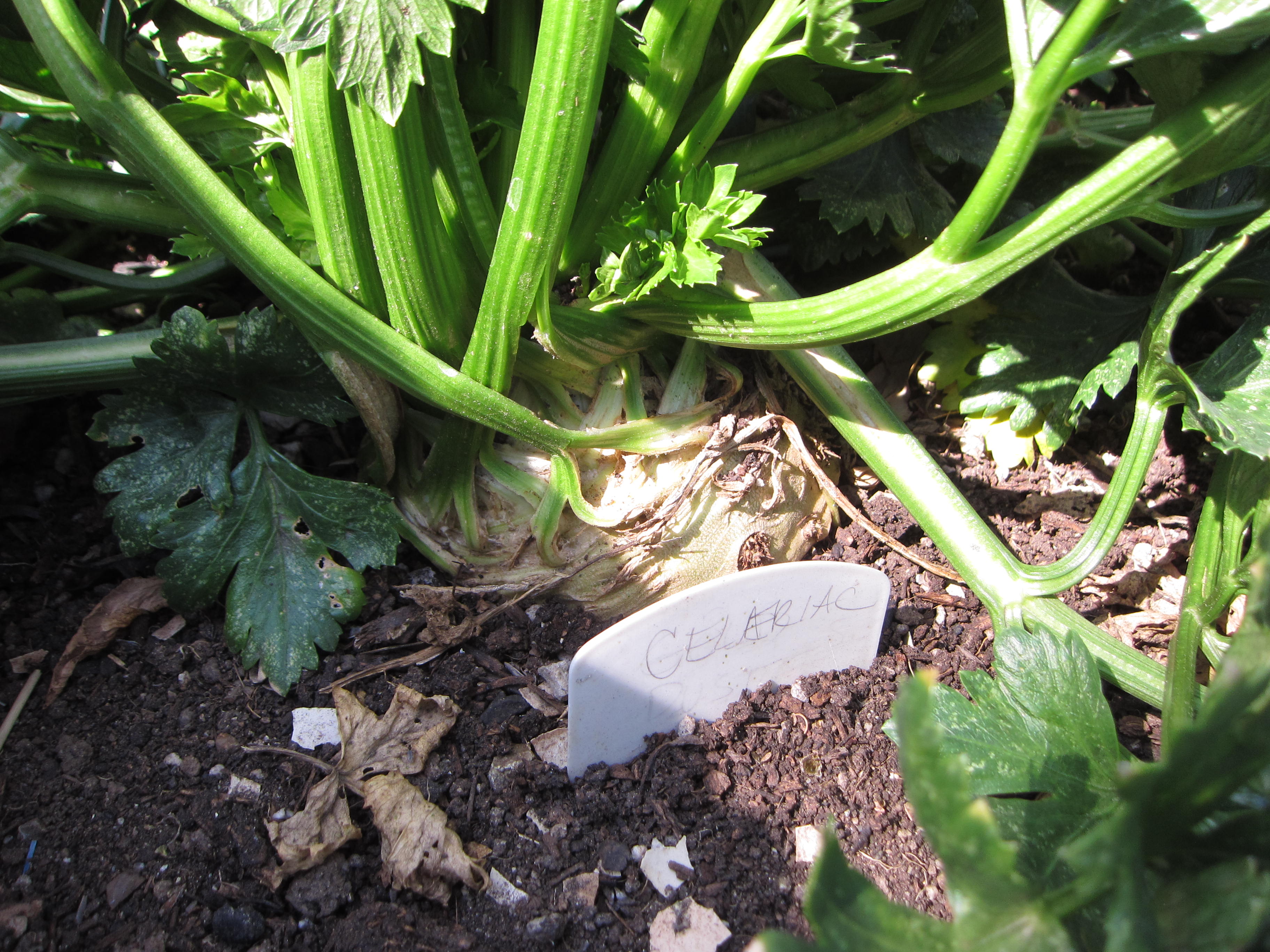
Loosen the smaller roots gently around the bulb.
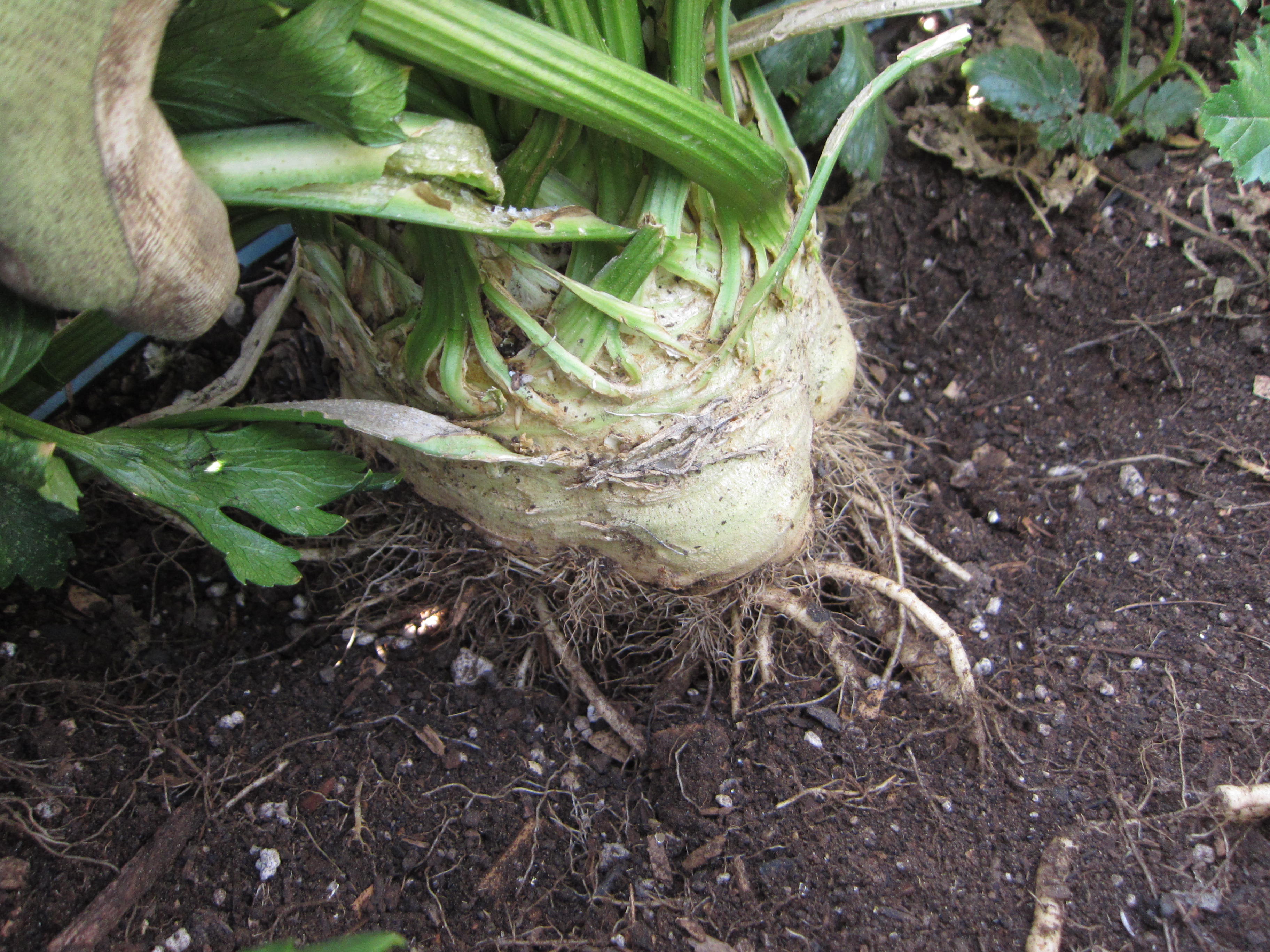
To get an idea of the size when it’s ready for use, here’s my foot:

And after trimming off stalks and roots…
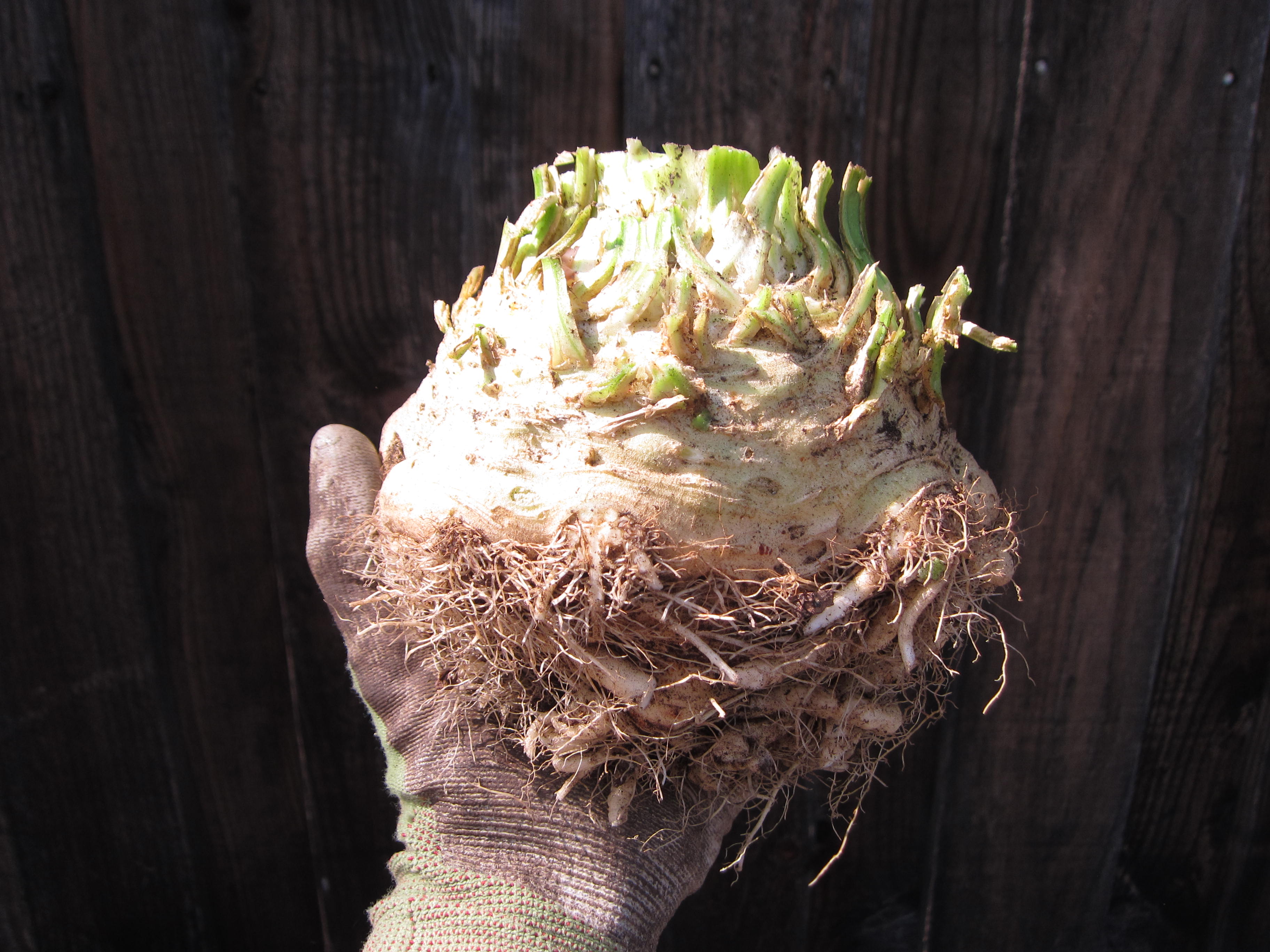
Now the fun part. Celeriac soup is easy to make. We followed this recipe:
Celeriac Root Soup
Ingredients
- 1 tablespoon butter or olive oil
- 2 leeks, white and light green part only, chopped
- 2 celery root bulbs (about a pound each), peeled and chopped
- 1/2 teaspoon salt
- 32 ounces chicken or vegetable stock
Just peel and dice the celeriac and leeks (we used home-grown leeks and an onion). Saute leeks in melted butter over medium heat until leeks are soft and translucent.
Add the rest of the ingredients to the pot. Bring to a boil, then lower to simmer in stock (we used water) until the celeriac is tender when pierced with a fork, about 18 minutes.

Then break out your immersion blender and puree this baby into a smooth soup. That’s it!
Of course, genius forgot to take photos of the finished product–not even the leftovers in the fridge days later! But you know how a pureed soup looks. You can add chives, parsley, or dill to garnish. Enjoy with a crusty bread. You can also freeze the leftovers.
So here is the finished product photo, borrowed from Catherine McCord, who owns this recipe on Epicurious (see link above).

If you live in a cool-winter climate, you can grow celeriac now and harvest in early summer. Or plant in late summer for a late fall harvest. Make a plan to grow celeriac. It’s delicious and easy to grow.

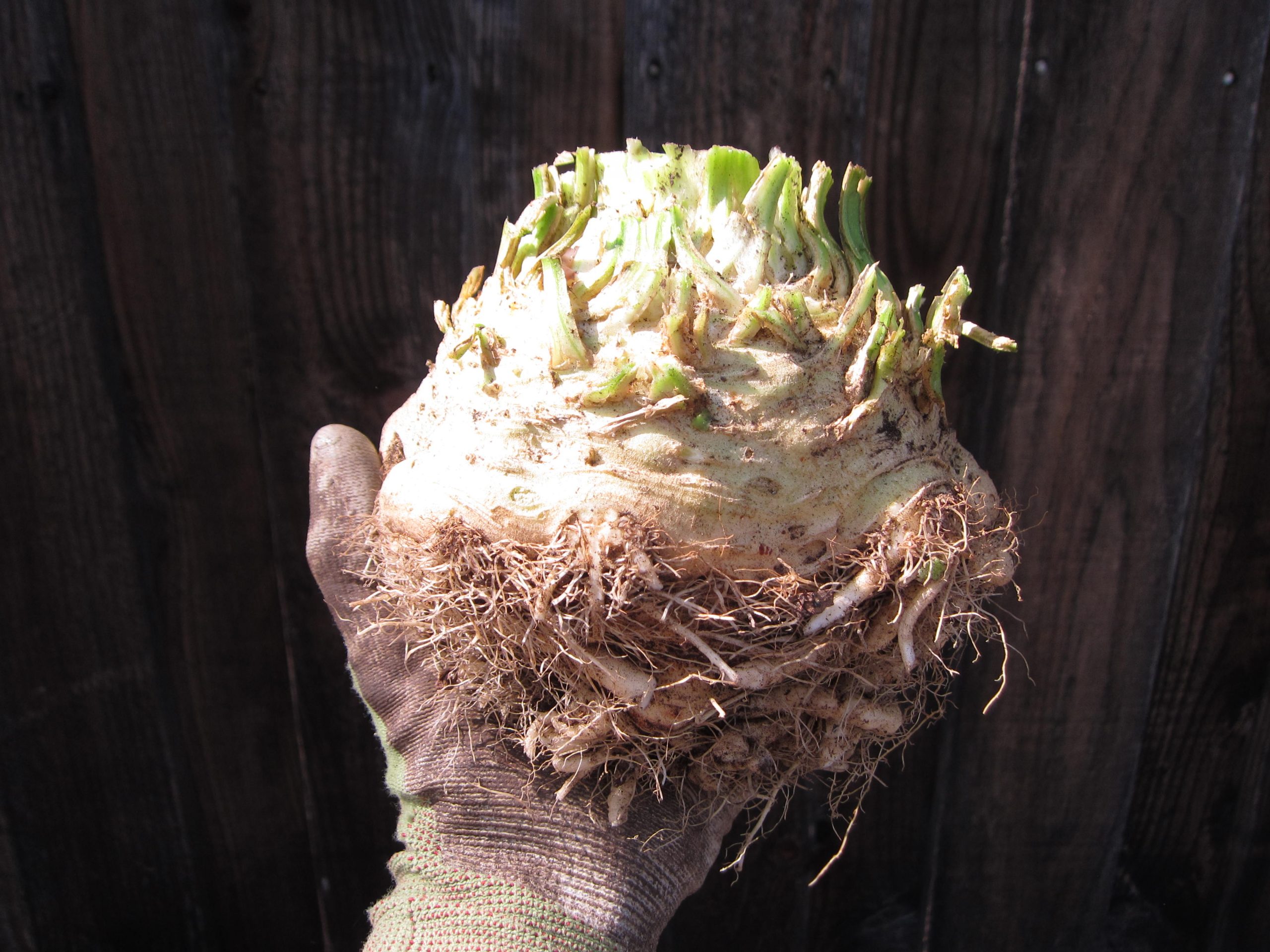

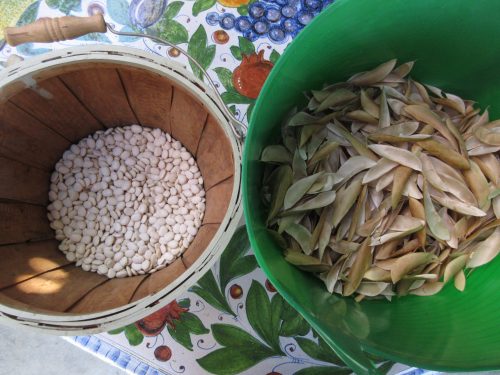

Pingback: Freezing Celeriac - How to Preserve Root Veggies - Gardenerd
Hello!
I’m here because I just listened to your interview on the Root Simple Podcast while I was emergency-processing a couple of large squashes that spoiled three months before they normally do. (This is what happens if you have to buy the stuff in for your winter storage because you didn’t find the time to rebuild your high-compost raised bed in the spring – badly cured winter squash.)
Anyway, what I wanted to share with you is that, where I come from (Northeastern Germany), celeriac is pretty much considered a fall/winter staple. By which I mean, it’s not that we east a lot of it (not like, say, carrots and onions), but that it stores a long time and that you can buy it at any discount supermarket for about §1.50 per bulb. The way it’s normally used is as a flavoring ingredient (that is, relatively sparingly) in various traditional autumnal root vegetable stews, because fresh stew herbs (like leaf cellery, parsley or lovage) lose their taste in the winter, even if they survive beyond November. There’s even a sort of vegetarian “soup stock bundle” that’s sold anywhere, which normally consists of a half-inch thick slice of celeriac, a 5 inch long piece of leek, 2 carrots, a small bunch of parsley (plus maybe some parsley root). To that, you then just add potatoes and onions (plus oil to sauté them) and maybe sausages if you want, for a nice, thick, warming and very affordable winter stew.
We also put the celeriac and carrots into lentil stew (the leek doesn’t work with that, though) topped with fried onions and sausages or diced ham (a little diced bacon would be traditional but I dislike the mouth-feel of bacon), and maybe a few spriggs of thyme for the traditional variant or curry for a more middle-eastern variant.
There’s also a traditional salad made primarily from grated celeriac, apples, cream, oil and vinegar, with maybe some chopped walnuts and/or raisins. I think Jamie Oliver imported that into the English-speaking area recently, though he makes mustard remoulade as the sauce. I don’t know how it compares to the traditional German/Polish version, since I don’t like raw celeriac (or mustard). I prefer the sweeter alternative that consists of grated carrots, apples, lemon or orange juice and maybe some raisins pre-soaked in the orange juice.
So for me, celeriac is basically the taste of winter. (The other ingredients in the above-mentioned stews we would use all year round, but celeriac is more of an autum season thing, since it doesn’t harmonize well with lighter, spicier summer cooking that’s more based on Italian or Chinese cuisine that depend on vegetables that don’t store long).
It’s a good thing that celeriac is easily available where I live, since I really don’t find it all that easy to grow. For one, it takes a long time – I have to start it indoors in February because it takes several weeks to germinate and needs as much time to grow as possible (we may have the first frosts in October), which in my winter-dark ). It’s a good thiarea means scraggly seedlings that won’t be strong enough to plant out till at least late May. Then the plant puts down a long tap-root, which means it doesn’t grow well in pots (I tried a few times and the bulbs never got bigger than a fist), and they need just as much space to spread as a higher-yield cabbage-type plant (like broccoli or those newer kohlrabi hybrids that grow to 2-4 pounds a piece without getting woody). They don’t play well with almost anything else when it comes to companion planting. And like the cabbage, celeric is a heavy feeder, but unlike any other common vegetable, they are extra fussy with regards to what kind of fertilizer and need two later doses of potassium at particular times during the growing period, according to the information on the seed package. Everything else just gets compost, some slow-release all-purpose vegetable fertilizer during planting, and then the larger plants later get top-ups with the diluted juice of fermented nettles or tomato leaves (high in N) with a handfull of wood ash (P + some K + lots of Ca in the form of lime) thrown in whenever I remember to do it, and that’s good enough.
By the way, has anyone ever told you that you sound a lot like Marisha Ray? So much so, that I actually wondered for a moment if “Marisha” is maybe an artist’s alias – after all, she did play the druid of the party in the first (long completed) storyline.
(She’s a voice actress and cast member of the LA-based Critical Role podcast / twitch / youtube webseries, which has been providing a very welcome and cost-free 4-hours-per-week antidote to reality-awareness-induced depression for me for the last few years. It’s perfect to listen to while you’re doing manual work like gardening or lengthy cooking / food preservation procedures. And when it’s not highly dramatic, it’s much funnier than any TV “comedy” show I’ve ever seen – which is quite impressive if you consider that it’s almost all unscripted, cooperative improv storytelling. Plus, you really can tell that this started out as a private hobby for a group of real friends and romantic couples who even years later are still doing this primarily to unwind after their day job, not as some corporate project designed to please a certain advertiser-favorite audience demographic. It’s rather telling that the only IMDB review (out of 85 reviews) that doesn’t give this show a perfect or almost perfect score is pissed about “the extreme leftist views of some of the cast members” – by which I guess he means the complete lack of sexism and the fact that almost all of the regular cast members have played a queer character at some point, and at least one of them really is bi and makes this quite obvious in his fashion sense after the first year. If you want a good impression of why this show is so beloved, I suggest watching ep. 60 “Heredity and Hats” as a test case, which is shorter than usual (it was performed at a con in front of a live audience) and doesn’t feature any real battle scenes, which can drag somewhat due to the time requirements of 9 players making survival-important decisions and trying to remember the myriad rules pertaining to their characters’ combat abilities, instead of just doing free improv theatre. If you watch the episode on Youtube, the actual storytelling starts at 12:25; the fan comunity went to the trouble of writing subtitles for everything to help the hearing-disabled or non-native-speaker viewers.)
Sorry for the typos. And there seems to have been a problem with cutting&pasting in the paragraph about the cultivation problems. It was meant to read “which in my winter-dark area means scraggly seedlings that won’t be strong enough to plant out till at least late May.”
Also, I forgot to mention: Since a whole bulb of store-bought celeriac is normally the size of a toddler’s head, an as I wrote you only use part of it in the dishes I’m familiar with, it’s good thing that the stuff keeps in the frigde for a few weeks even after you cut it open – though the cut surface will turn yellow from oxidization. Or you can prep and dice the whole thing and throw it in the freezer (without blanching it first) – the flavor may lose a bit of intensity, but it still will be perfectly good enough for stews (or mashing) when you thaw it or put it right into the pot still frozen. It doesn’t turn rubbery and odd-tasting the way for example squash does when you try to freeze it raw.
Pingback: 119 A Chat With the Garden Nerd | Root Simple